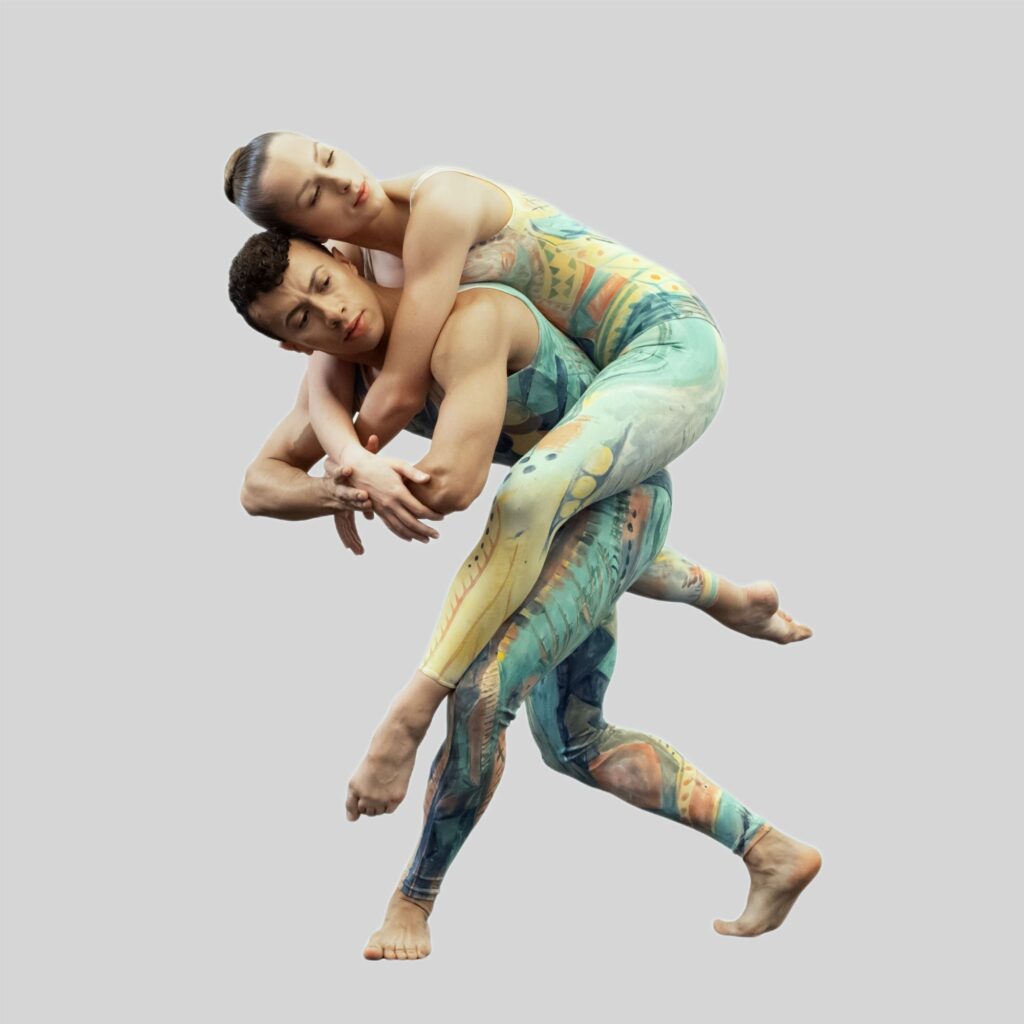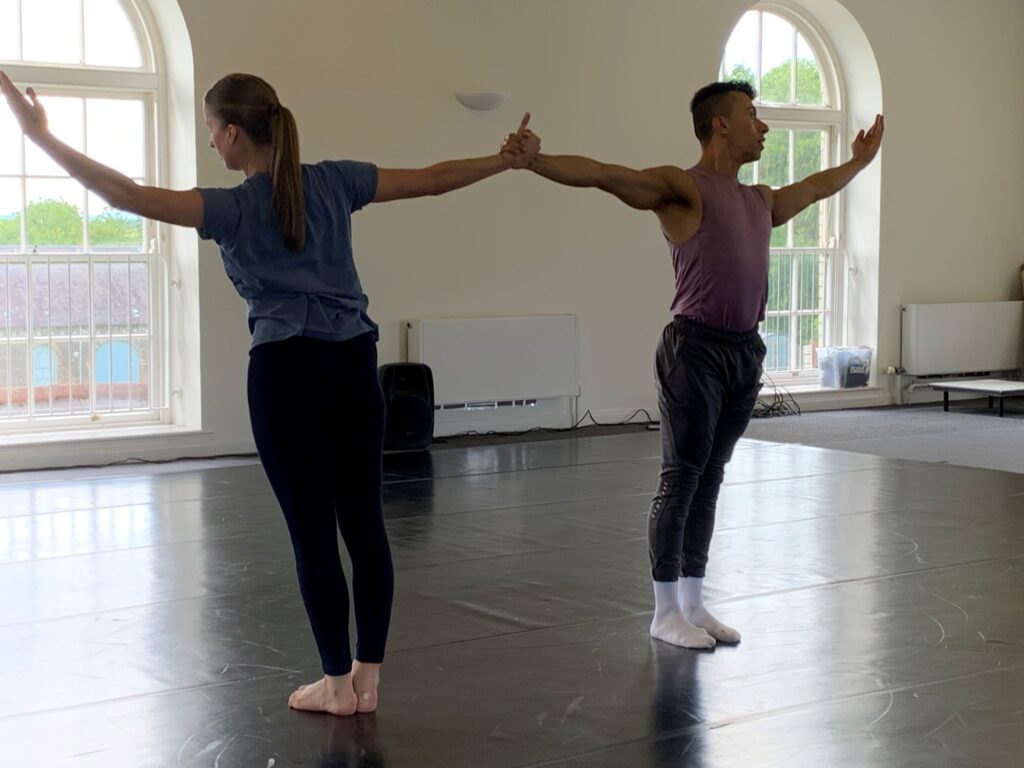
When a famous painting by John Constable turns up in a Jarrow shopping centre, or one by Turner at the Laing, we are excited. We see it from a modern perspective in the light of all we know.
Eliot Smith, in his new programme Past & Future, invites us to consider a dance work in the same way.
It’s 60 years since Duet, by the renowned American choreographer Paul Taylor, was first performed… then, as now, to music by Haydn.
A New York Times critic wrote that there was “a jewel-like quality” to the work, an abstract expression of love, ‘with things just right as they are’.
It was also 60 years ago that the Paul Taylor Dance Company first visited this country with a London season.
Its last visit to the North East was to the Theatre Royal in 2003. Eliot wasn’t there — he would have been a bit young — but is the proud possessor of a souvenir programme, given to him by someone who was.
Unlike a painting, dance is ephemeral, gone in a flash — and Duet, though technically demanding, really is ‘jewel-like’, only seven minutes long.
But it’s loaded with history of a kind that inspires and fascinates Eliot, a devotee of Martha Graham, whom he calls ‘the mother of contemporary dance’, and of those she influenced, including Paul Taylor.
Graham flouted the rules in the 1920s and ushered in the modern era of dance and choreography in America.
She set up her own company in 1926 along with the Martha Graham School where Eliot studied for a while after graduating from London Contemporary Dance School.
Paul Taylor might have seemed unlikely dance material, coming to it relatively late after studying to be an artist and swimming competitively. He went to university on a swimming scholarship and discovered dance via books in the library.
- Read more: A story to stick with…
- Read more: Poetic power of Morden Tower
In the 1950s he joined Martha Graham’s company, performing notable solo roles for her while also creating work for his own company which he set up in 1954.
Taylor died in 2018, aged 88, but the Paul Taylor Dance Company goes from strength to strength, building on the repertoire of 147 masterworks choreographed by its founder.
And in a sunlit upper room at Woodhorn Museum, Eliot Smith and his dancers are preparing to spread the word, rehearsing Duet for the tour that begins at Dance City on June 12.
Even in America you’d find no-one more devoted than Eliot to the founders of modern dance and their achievements.

Picking up the Constable/Turner comparison, he says: “A painting might be great art but it’s finished. It’s powerful but it stays the same.
“With dance, you can revive it but it’ll be different every time because of the dancers.”
Those dancers on this occasion are ESD regulars Yamit Salazar and Rowan Parker.
Following a successful Crowdfunding campaign, they flew with Eliot to New York earlier this year to work for a fortnight with Paul Taylor Dance Company.
The visit came out of the latest of Eliot’s ‘ESD Presents…’ events, intensive weeks dedicated to a notable choreographer, which in 2023, at Newcastle College, focused on Paul Taylor.
Speakers included former Taylor dancers Parisa Khobdeh and Richard Chen See.
The latter, whose colourful and much-travelled life in dance includes a brief period attending ballet classes in Whitley Bay, is now the company’s director of licensing.
Eliot remembers asking him what his company would have to do to present a Paul Taylor work in the UK.

Richard suggested Duet would be within its scope and recommended a trip to New York if they could get themselves there.
The “eye-opening” trip to Paul Taylor Dance Company headquarters in Manhattan followed.
There they met and were coached by the now 80-year-old Carolyn Adams who danced Duet in the 1960s and is director of education at The Taylor School.
It could have been an intimidating experience but Eliot recalls it fondly, despite Adams’s good-humoured but sharp critique of a recent revival of Duet by another famous dance company.
“I was sitting with her during the two weeks in New York. She’s so well-known there and hugely respected… and she knew that work inside out.”
Eliot says Duet is “testament to the simplicity and clarity of Paul Taylor’s craft” but those qualities are often deceptive. Conveying them can be hugely challenging.
Performing it at Woodhorn, the first run-through of the day, I can see the effort entailed. At one point Yamit lets out an involuntary yelp. The movement is fluid and beautiful but intensely controlled.
“It’s very technical but also very pure which is hard because there’s no busyness to hide behind,” says Rowan.
“Or 20 other dancers,” chips in Yamit with a smile.
“You get lost in the technicality of the moment and only when you watch the video afterwards do you realise, ‘Oh, we made a heart!’”
Of working with Carolyn Adams, Rowan recalls: “She was very kind and nurturing. She made clear what had to be done but delivered it in a way that was very helpful. She wanted us to get the best out of it.”
“It was an amazing opportunity,” agrees Yamit, “having her teaching and coaching us as one of the original dancers from the 60s.
- Read more: The facts behind the claims of first election debate
- Read more: Calls for new government to create AI champion
“For the two weeks we were there we had technical classes with the company so we were able to learn advance movement and apply it to the work.”
For the North East performances Yamit and Rowan will wear one of the three surviving sets of costumes designed for the piece by Paul Taylor himself who, as designer, went under the pseudonym George Tacet.
They date from 1973 and do indeed have a colourful, sun-drenched Seventies vibe.
On tour, the intimacy of Duet will contrast with the epic qualities of Human, tracing human evolution with Yamit dancing to specially composed and dramatic music by Adam Johnson.
The programme is born of Eliot’s reflection on the past and future of dance and of his company which seems locked in a remorseless battle to survive and create in a challenging funding landscape.

Eliot noted that in philanthropy-rich America, or at least at Paul Taylor Dance Company, even individual toilets bear the names of benefactors.
But ESD — based now at Dance City — has keen supporters in the North East and also in America now, and Eliot is passing on some of his dance passion to those following in his footsteps.
If you want to know about Paul Taylor, ask some of the pupils at St Mark’s Catholic Primary School in Westerhope, Newcastle, who attended his six workshops which culminated in a performance.
The first performance of Past & Future, featuring Duet and Human, is at Dance City on June 12 (7.30pm).
Catch it thereafter at the Bowes Museum, Barnard Castle, on June 26 (7pm); Woodhorn Museum, Ashington, on June 29 (2pm); or Durham Fringe Festival on July 24, 25, 27 and 28 (7pm) at Fonteyne Ballroom @ Dunelm House.
If you’re in London on July 3, there’s a performance at Chelsea Theatre at 8pm.
And if you can’t make any of those, there’s an online showing on July 5 (8pm).
Meanwhile, looking further into the future, ESD is planning an autumn revival of its popular and poignant Pitman to mark the 40th anniversary of the miners’ strike of 1984-5.











